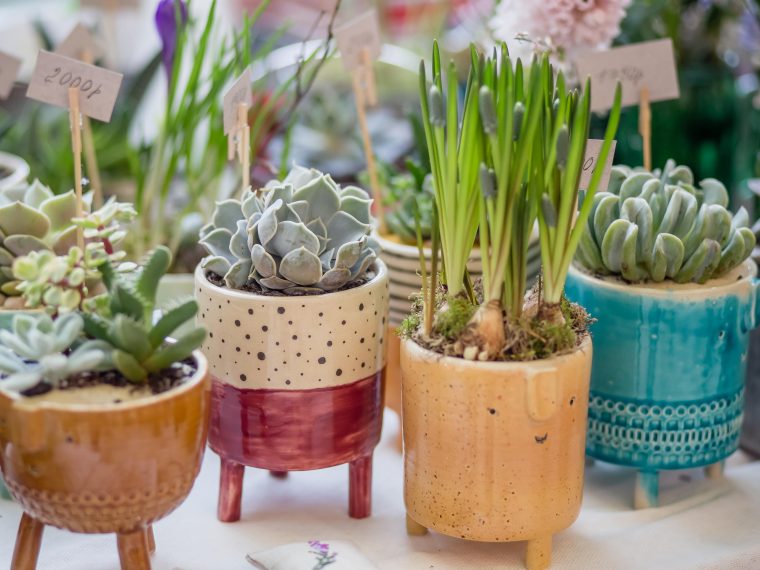When it comes to adding some life to your home, there are few options more stylish and easy to care for than indoor plants. Not only do they help purify the air and inject some much-needed greenery into your décor, but they can also boost your mood and relieve stress. And with so many different types of indoor plants to choose from, you’re sure to find the perfect one (or three) to suit your space and lifestyle.
Here are just a few of the most popular indoor plants that you might want to consider adding to your home:
1. Aloe Vera
This succulent is best known for its healing properties – the gel inside its leaves can be used to soothe burns and cuts – but it’s also a beautiful and low-maintenance plant that does well in bright, indirect light. Just be sure not to overwater it, as too much moisture can rot the roots.
2. Snake Plant
If you’re looking for a plant that’s virtually indestructible, the snake plant is a good option. It’s tolerant of low light and infrequent watering, making it ideal for busy people or anyone who doesn’t have a green thumb. Plus, it emits oxygen at night, so it’s perfect for bedrooms.
3. Spider Plant
The spider plant is another easy-to-care-for option that does well in both bright and low light. It’s also known for being particularly good at purifying the air, so it’s a great choice if you suffer from allergies or asthma. Just be sure to keep an eye on it, as it can be poisonous to pets if ingested.
4. Peace Lily
The peace lily is a beautiful flowering plant that does well in low light and humid conditions – making it ideal for bathrooms. It’s also known for being particularly effective at filtering out harmful toxins like benzene and formaldehyde from the air. Just be sure not to overwater it, as too much moisture can lead to root rot.
5. Rubber Plant
The rubber plant is a popular choice for offices and homes thanks to its stylish, glossy leaves and tolerance for low light. It’s also known for being one of the best indoor plants for purifying the air, as it filters out toxins like formaldehyde and carbon monoxide. Just be sure not to overwater it, as too much moisture can cause the leaves to drop.
Benefits of Having an Indoor Plant at Home
If you’re looking to add a little life to your home, consider getting an indoor plant. Not only do indoor plants add a touch of beauty to your space, they can also improve your health. Here are some of the benefits of having an indoor plant at home:
1. Indoor plants improve air quality.
We all know that plants produce oxygen, but did you know that they can also help to remove harmful toxins from the air? Indoor plants act as natural air purifiers, absorbing pollutants like carbon dioxide, formaldehyde, and ammonia. This helps to improve the air quality in your home and can even help to reduce allergies and respiratory problems.
2. Indoor plants boost your mood.
Studies have shown that being around plants can help to improve your mood and reduce stress levels. Having an indoor plant in your home is a great way to keep your spirits up, especially on gray days when you can’t get outside as much.
3. Indoor plants boost your concentration and productivity.
If you’re looking for a natural way to boost your concentration and productivity, consider getting an indoor plant. Studies have shown that having plants in the workplace can help workers focus and be more productive. So if you’re looking to get ahead at work, make sure to keep a plant on your desk!
4. Indoor plants improve your cognitive function.
Not only does being around plants help improve your concentration, it can also improve your cognitive function. One study found that older adults who were exposed to plants showed improved memory recall and attention span. So if you’re looking for a way to keep your mind sharp, consider adding an indoor plant to your home.
5. Indoor plants can help you sleep better.
If you’re having trouble sleeping, an indoor plant might be just what you need. Plants help to reduce noise and light pollution in the bedroom, creating a more peaceful environment for sleep. In addition, the scent of some plants (like lavender) can help to promote relaxation and better sleep.
How to Care for Your Indoor Plants?
Assuming you would like tips on how to care for your indoor plants:
Indoor plants are a great way to liven up any home or office space. Not only do they add a touch of nature to your indoor environment, but they can also help purify the air and boost your mood.
However, indoor plants can be tricky to care for. Different plants have different watering needs, and it can be difficult to know how much sun or shade they need.
Here are a few tips on how to care for your indoor plants:
1. Watering Needs
One of the most important things to consider when caring for your indoor plants is their watering needs. Over-watering is one of the most common mistakes made when caring for indoor plants. This can lead to root rot and other problems.
Before watering your plant, check the soil. If it is dry, then your plant needs water. If the soil is wet or soggy, then wait until it dries out before watering again.
2. Sunlight Needs
Just like people, plants need sunlight to thrive. However, too much sun can damage your plant. When choosing a spot for your plant, make sure it has access to bright, indirect sunlight.
If you are not sure how much sun your plant needs, check the label or ask a nursery worker. Some plants, such as succulents, cacti, and ferns, do not need as much sun as others.
3. Fertilizer Needs
Most indoor plants will benefit from being fertilized once a month during the growing season (spring and summer). However, some plants, such as cacti and succulents, do not need to be fertilized as often. Over-fertilizing can damage your plant.
4. Temperature Needs
Most indoor plants like temperatures that are between 65 and 75 degrees Fahrenheit during the day and 10 to 15 degrees cooler at night. If you have a plant that is sensitive to temperature changes, such as a fern or tropical plant, make sure it is in an area that doesn’t experience drafts from doors or windows. 5. Humidity Needs
Plants also have different humidity needs. Some plants, such as ferns and tropical plants, need high humidity levels to thrive while others do not.
If you live in an area with low humidity levels, you may need to mist your plants regularly or invest in a humidifier. You can also group plants together to create a microclimate with higher humidity levels. 6. Repotting Needs As your plant grows, it will need more room in its pot. When repotting your plant, choose a pot that is only one size larger than the current pot. Be careful not to damage the roots when repotting.
These are just a few general tips on how to care for your indoor plants. For more detailed information on specific plants, consult a gardening book or ask a nursery worker.


